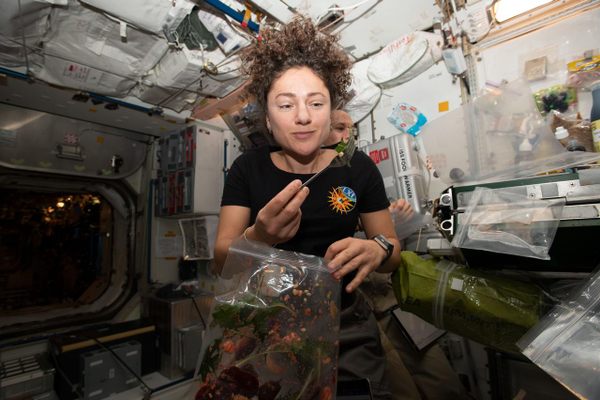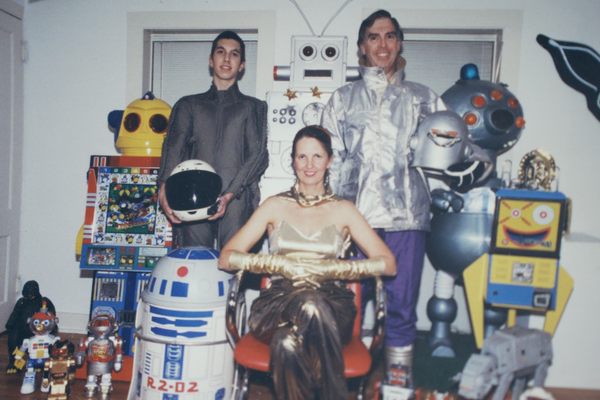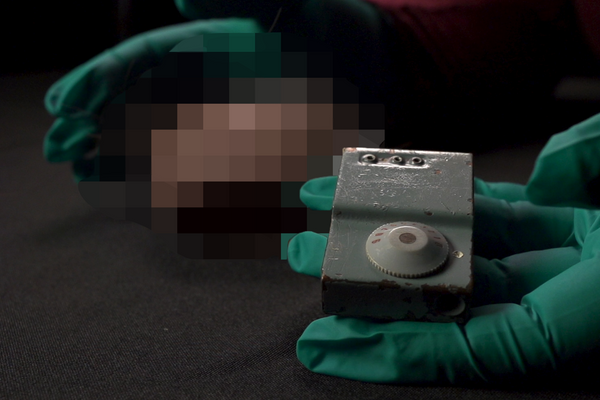NASA’s Silver Snoopy Award, Explained
The cartoon beagle has been flying with the space agency since the 1960s.

Yes, NASA really does give out a prestigious award called the Silver Snoopy. But it isn’t given to astronauts.
Instead, astronauts give them to members of their various research and support staffs, in recognition of their contributions to the safety of the space program. Why Snoopy? Because in the 1960s, there was no one hotter.
In that decade, the popularity of Charles M. Schulz’s Peanuts characters were at an all-time high. The first animated special, A Charlie Brown Christmas, hit the airwaves at the end of 1965. Earlier that same year, the characters were featured on the cover of Time. In the Peanuts gang, and specifically in breakout star Snoopy, NASA saw a way to bring a beloved, smiling face to the space program at a time when it desperately needed one.

Recall that in 1967, Apollo 1 suffered a catastrophic fire in the command module that killed all three crew members. The tragedy forced the massive space agency to grapple with how they could help their often disconnected internal departments feel closer to the actual astronauts and their mission. By 1968, NASA employed some 268,000 people, a great number of whom were solely dedicated to sending a handful of astronauts into space.
The Silver Snoopy award came out of these post-Apollo 1 efforts, and was the brainchild of Al Chop, then the director of public affairs for the Manned Spacecraft Center.

As he recounted in a 2000 article in the Houston Chronicle (shared on Collect Space), Chop went to the United Feature Syndicate, which controlled the rights to Peanuts, to ask permission to use Snoopy for the award. Initially, they were reluctant to let the beagle “moonlight,” until Chop mentioned that he could probably send Snoopy to the moon. Before long, and with the blessing of Schulz himself, Snoopy was approved for work with NASA.
In 2010, Schulz’s son Craig was quoted as saying that his father was thrilled to get the opportunity to work with the space program. The elder Schulz drew an original sketch of Snoopy in a space suit, complete with helmet, scarf, and little gearbox, and from this drawing, the Silver Snoopy award, a small silver tie pin, was cast.
The first Silver Snoopy Awards were bestowed in 1968, to some of the crew who worked on the LTA-8 project, a test version of what would become the lunar module. The next year, in 1969, Chop’s promise to get Snoopy to the moon would more or less come true during the Apollo 10 mission. As a test run for Apollo 11, Apollo 10 came within eight miles of the moon’s surface. Its command module and lunar module were nicknamed “Charlie Brown” and “Snoopy,” respectively, and the astronauts on the mission even sent back images of themselves holding pictures of the Peanuts characters in space.

Today, NASA’s database of Silver Snoopy recipients lists over 15,000 individuals who have received the award since its inception, hailing from departments across the agency. NASA says that fewer than 1 percent of their workforce receive the award annually, and in order to be eligible they must meet at least two criteria from a longer list that includes such goals as, “Developing or assisting with an operational improvement that increases efficiency and performance,” or “Contributing to one or more major cost saving/cost avoidance.”
The Silver Snoopy pin is also a hit among collectors of both space memorabilia and Peanuts artifacts, going for $1,000 or more on eBay. Adding to their appeal, NASA’s site says that each pin has been to space and back before it is awarded, although some collectors dispute this.
In 2009, a five-foot-tall statue of Snoopy in a space suit was erected outside of the Kennedy Space Center to commemorate the 40th anniversary of the beagle’s role in the Apollo 10 mission. But the cartoon dog’s role in the space program is reaffirmed each time the Silver Snoopy honors another behind-the-scenes hero.

















Follow us on Twitter to get the latest on the world's hidden wonders.
Like us on Facebook to get the latest on the world's hidden wonders.
Follow us on Twitter Like us on Facebook